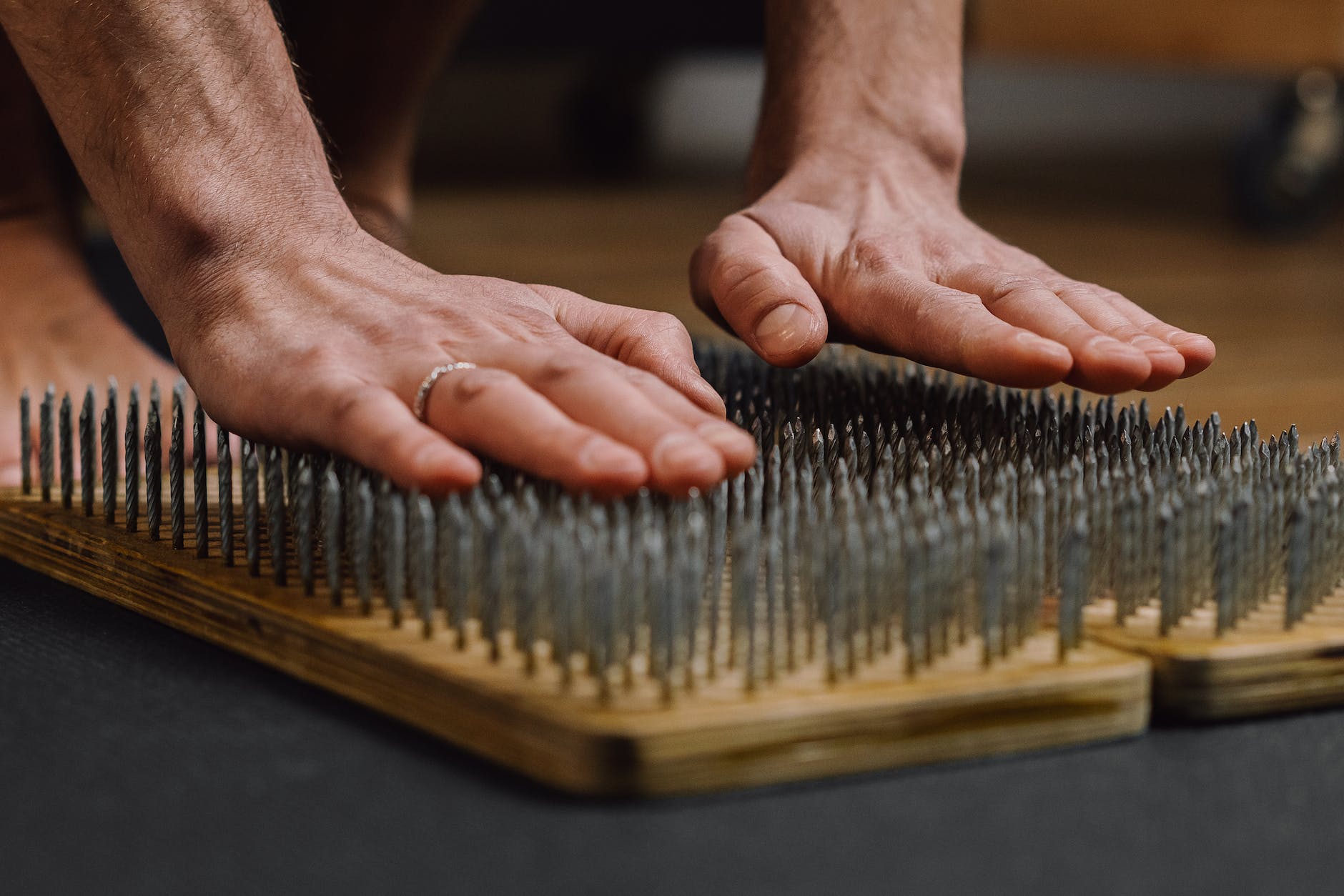
Photo by Mikhail Nilov on <a href="https://www.pexels.com/photo/a-person-leaning-on-bed-of-nails-6943890/" rel="nofollow">Pexels.com</a>
Back pain affects many of us at some point in our lives, with spinal stenosis being one of the most common causes. While conventional treatments are available, such as medications, and surgery, everyone may not like them. That’s where alternative therapies come in. But do they actually work?
Before diving into some of these alternative therapies and their effectiveness, you may wonder what is stenosis in the first place. Simply put, spinal stenosis refers to the abnormal narrowing of a body channel or canal.
Here are some of the effective alternative therapies for spinal stenosis.
- Chiropractic Care
Chiropractic care involves manipulating the spine to improve the body’s alignment and relieve pain. Chiropractic therapy can provide comparable benefits to nonsteroidal anti-inflammatory drugs (NSAIDs) for individuals experiencing lower back pain. Additionally, patients receiving chiropractic care for back pain may be less likely to use opioids for pain management.
In clinical trials, researchers discovered that chiropractic therapy resulted in decreased low back pain intensity and disability when compared to a control group. So, individuals can supplement traditional medical treatments with chiropractic care, such as physical therapy and pharmacological interventions.
- Acupuncture
Acupuncture is an ancient Chinese medicine practice that involves inserting thin needles into specific points on the body to stimulate energy flow and promote healing.
Studies have consistently demonstrated that acupuncture can provide clinically relevant benefits for pain relief and improved function in individuals with spinal stenosis. These benefits are more effective than no treatment or acupuncture combined with other conventional interventions.
Also, systematic reviews have indicated that acupuncture, whether used alone or in combination with conventional therapy, can lead to short-term improvements in pain and function for chronic low back pain.
- Massage Therapy
Massage therapy involves manipulating the body’s soft tissues to promote relaxation, reduce pain, and improve overall health. Although it does not directly target the spine, various massage techniques focus on the back and back muscles.
A therapist can use techniques such as long strokes, gentle kneading, and heat application to relax the back muscles and relieve discomfort caused by a pinched nerve. In fact, studies show it is an effective method for managing symptoms and relieving chronic back pain.
- Homeopathy
A variety of herbal medications and remedies are available in this field, which can be beneficial in reducing pain. Some examples include chondroitin sulfate, glucosamine, and hyaluronic acid.
Homeopathic medicines can help manage symptoms of certain conditions alongside conventional treatment. These medicines are selected based on individual symptoms, and patients should take them under the guidance of a homeopathic doctor. Seek conventional treatment immediately if severe symptoms or serious conditions such as cauda equina are present.
Conclusion
While many conventional treatments are available for spinal stenosis, they are only sometimes effective or suitable for everyone. Alternative therapies, such as chiropractic care, acupuncture, massage therapy, and others, may help manage symptoms and improve overall health.
However, it’s important to note that alternative therapies may not always be a substitute alternative for medical treatment, and you may have to seek medical attention in severe conditions.


